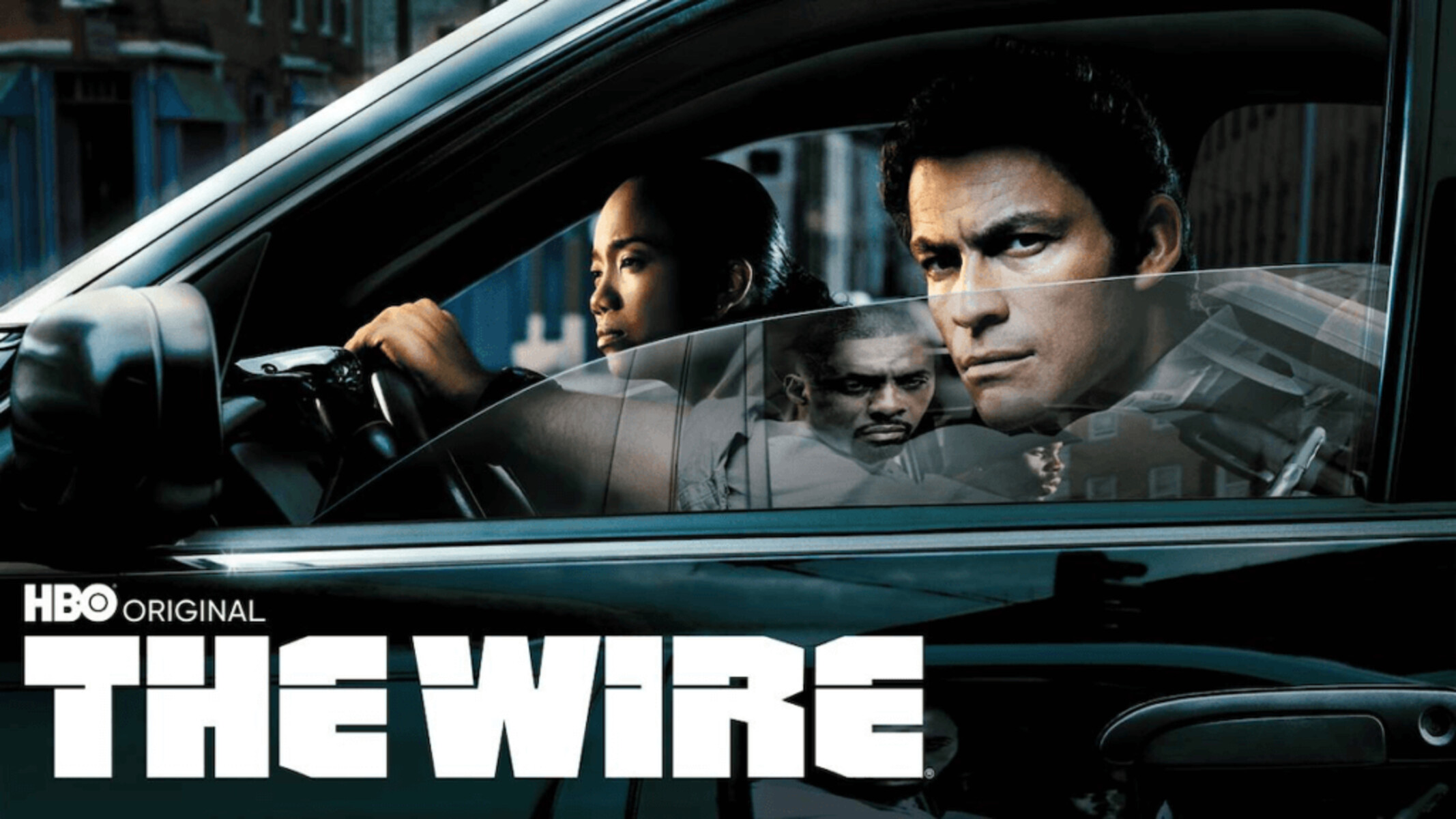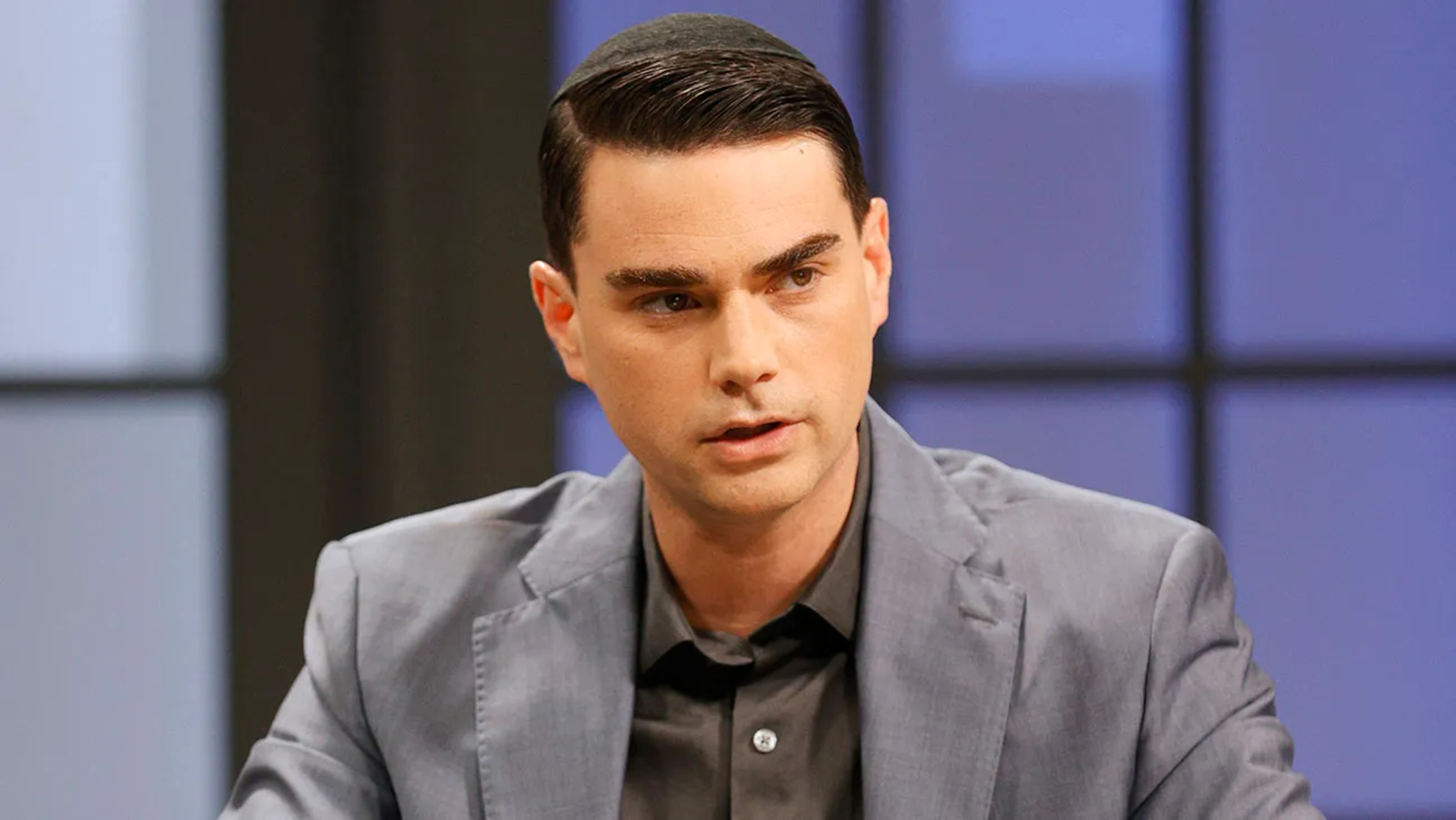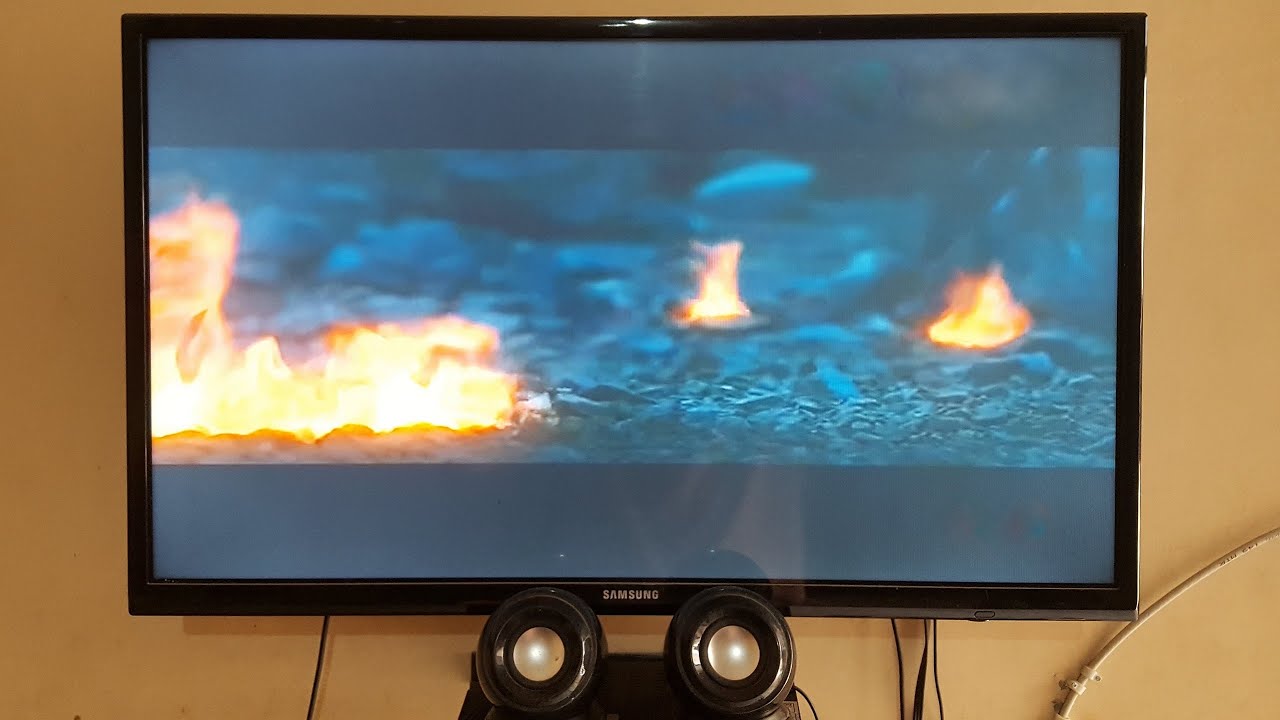Introduction
Welcome to the captivating world of The Wire, a critically acclaimed television series that has garnered a dedicated fan base over the years. Created by David Simon, this groundbreaking show first aired in 2002 and delves deep into the gritty streets of Baltimore, Maryland. Through its five-season run, The Wire explores various interconnected storylines, tackling themes of crime, corruption, poverty, and social inequality.
With its realistic portrayal of urban life and complex characters, The Wire stands apart from conventional TV dramas. It offers a unique viewing experience that requires attention to detail and an understanding of the intricate narratives. Each season focuses on a specific aspect of Baltimore’s society, shedding light on the inner workings of the drug trade, politics, education, media, and law enforcement.
As you immerse yourself in the world of The Wire, you’ll be drawn into a vast web of storylines and characters that will challenge your perception of the justice system and the inner workings of society. The series provides a thought-provoking commentary on the interconnectedness of various institutions and the effects they have on individuals and communities.
In the following sections, we will explore why The Wire is worth watching and how its unique qualities set it apart from other television shows. From the meticulous attention to detail to the captivating portrayal of characters, we will delve into the key elements that make this series a true masterpiece.
Understanding the Context
To fully appreciate The Wire, it’s essential to understand the context in which the series unfolds. Set in Baltimore, a city plagued by crime and socio-economic challenges, The Wire paints a vivid picture of the struggles faced by its inhabitants. By exploring the urban landscape, the show offers a glimpse into the realities of life in a city where the line between legal and illegal activities is often blurred.
Baltimore serves as more than just a backdrop for the story; it becomes a character in itself. The crumbling infrastructure, abandoned buildings, and economic disparity become powerful symbols of a flawed system. The Wire takes a deep dive into these issues, examining the impact they have on its characters and the city as a whole.
By showcasing different perspectives, The Wire presents a nuanced view of Baltimore’s neighborhoods. It sheds light on the challenges faced by both the residents and the law enforcement agencies tasked with maintaining order. From the impoverished areas ravaged by drug addiction to the corridors of power in City Hall, the series provides a multi-dimensional understanding of the city’s landscape.
An important aspect of understanding the context is recognizing the historical and social factors that contribute to the narrative. The show delves into the legacy of racial segregation, economic disparities, and the war on drugs, providing a critical examination of the systemic issues that perpetuate inequality and hinder progress.
Moreover, The Wire exposes the flaws within institutions such as the police department, the education system, and the media, highlighting the difficulties in effecting meaningful change. By shining a light on these institutions, the show encourages viewers to reflect on the wider societal issues that continue to persist in cities across America and beyond.
As you watch The Wire, pay close attention to the context, as it forms the foundation of the series. Understanding the complexities of Baltimore and the socio-economic factors at play will allow you to fully engage with and appreciate the narrative that unfolds.
Paying Attention to the Detail
One of the distinguishing factors that sets The Wire apart is its meticulous attention to detail. Every aspect, from the writing to the production design, is carefully crafted to create an immersive and authentic portrayal of Baltimore’s urban landscape.
The show’s creators, David Simon and his team, spent months researching and embedding themselves in the neighborhoods of Baltimore. This dedication shines through in the series, as it presents a realistic depiction of the city’s streets, institutions, and the people who inhabit them.
One of the ways The Wire accomplishes this is by employing a large and diverse ensemble cast. From the detectives on the police force to the drug dealers on the corners, each character is fully fleshed out with their motivations, strengths, and flaws. The writing and performances are so nuanced that it’s easy to forget you’re watching a scripted drama.
Another aspect where the attention to detail is evident is in the show’s portrayal of the legal and criminal systems. From the wiretaps and surveillance efforts used by the police to the intricate networks of drug distribution, every step of the process is meticulously depicted. The level of authenticity is so remarkable that The Wire has often been praised for its accuracy by insiders familiar with the world it portrays.
Beyond the narrative and characters, The Wire’s attention to detail extends to the visual and auditory elements of the show. The cinematography captures the gritty and raw essence of Baltimore, whether it’s the decaying buildings in the impoverished neighborhoods or the grandeur of the city’s skyline. The use of natural lighting and handheld camera work gives the series a documentary-like quality that adds to its realism.
In addition to the visual elements, The Wire’s soundtrack is also carefully curated to enhance the viewing experience. From its iconic opening theme song, “Way Down in the Hole” by The Blind Boys of Alabama, to the selection of songs that underscore pivotal scenes, the music complements the storytelling and adds an extra layer of atmosphere.
To fully appreciate The Wire, it is essential to pay attention to these details. Every line of dialogue, every shot, and every character interaction has a purpose. By immersing yourself in the intricacies of the series, you will not only gain a deeper understanding of the story but also a newfound appreciation for the artistry behind its creation.
Following the Complex Storylines
The Wire is renowned for its intricate and multi-layered storytelling. With its sprawling narrative and interwoven plotlines, the series demands your full attention as you navigate through its complex structure.
Each season of The Wire focuses on a specific theme or institution, such as the drug trade, education system, or media. However, these storylines are not isolated; they intertwine and intersect with one another, creating a tapestry of narratives that reflect the interconnectedness of Baltimore’s society.
One of the show’s strengths is its ability to present various perspectives. As a viewer, you’ll encounter characters from different walks of life, each with their own motivations and agendas. From the street-level drug dealers to the ambitious politicians and dedicated law enforcement officers, The Wire showcases a wide range of experiences and viewpoints.
Following the multiple storylines requires active engagement. Characters and events introduced in one season may reappear and have repercussions in later seasons. This continuity creates a sense of realism and adds depth to the narrative. It rewards attentive viewers who can draw connections between past and present events, creating a rich viewing experience that goes beyond episodic storytelling.
The complexity of the storylines is further heightened by the moral ambiguity presented throughout the series. The Wire doesn’t rely on simplistic notions of good and evil; instead, it explores the gray areas that exist within the criminal justice system, politics, and other institutions. This nuanced approach challenges viewers to confront their own preconceptions and question the systems that govern our society.
However, while the storylines in The Wire may be intricate, they are also deeply human. The characters are flawed and relatable, driven by their desires, aspirations, and struggles. Despite the complex narrative, the show never loses sight of the human element, making it accessible and emotionally resonant.
To fully appreciate The Wire’s complex storylines, it’s crucial to watch the series with a keen eye and a willingness to immerse yourself in its world. By following the threads that connect the various plotlines and characters, you’ll gain a deeper understanding of the show’s overarching themes and the intricate web of Baltimore’s social fabric.
Appreciating the Realistic Characters
At the heart of The Wire’s success lies its ability to create realistic and compelling characters. From the police officers and drug dealers to teachers and politicians, the characters in the series are expertly portrayed, showcasing the complexities of human nature and the choices they face.
Unlike the archetypal characters often seen in television dramas, the characters in The Wire are multi-dimensional and defy easy categorization. They are neither entirely good nor entirely bad, but rather a reflection of the gray areas that exist in real life. This level of realism allows viewers to connect with the characters on a deeper level, engaging with their struggles, motivations, and flaws.
The show’s ensemble cast delivers exceptional performances, bringing these characters to life with authenticity and nuance. From the stoic and determined Detective Jimmy McNulty to the charismatic and ruthless drug kingpin Stringer Bell, each character is fully fleshed out and leaves a lasting impression.
One of the remarkable aspects of The Wire is its ability to humanize individuals on both sides of the law. By exploring the perspectives of cops and criminals, it challenges viewers’ preconceived notions and evokes empathy for characters who might otherwise be dismissed as villains.
In addition to the main characters, The Wire also pays attention to the supporting roles, ensuring that even the minor characters have depth and influence on the overall story. By giving every character purpose and significance, the series creates a truly immersive and believable world.
Furthermore, the characters in The Wire evolve over time, reflecting the changing circumstances and consequences of their actions. This emphasis on character development adds layers of complexity and creates a sense of authenticity. It underscores the idea that individuals are shaped by their environment and the choices they make, highlighting the impact of institutional forces.
Appreciating the realistic characters in The Wire requires an understanding of their motivations, their struggles, and the larger themes they represent. By investing in the characters’ journeys and appreciating their complexities, viewers gain a greater appreciation for the show’s ability to mirror the complexities of the real world.
Examining Social Issues
The Wire goes beyond being a mere crime drama; it serves as a platform for exploring and dissecting various social issues that plague urban communities. Through its in-depth exploration of these issues, the series prompts viewers to critically examine the systems, institutions, and structures that shape our society.
One of the central themes examined in The Wire is the impact of the drug trade on individuals and communities. The series paints a stark and unflinching portrait of the devastating effects of addiction, the violence that arises from the drug trade, and the cyclical nature of poverty that perpetuates these issues.
Beyond the drug trade, The Wire also tackles other social issues such as systemic racism, poverty, education inequality, and political corruption. By shining a light on these topics, the show reveals the deep-rooted societal problems that contribute to the cycle of despair and desperation experienced by many inner-city communities.
Through the lens of its characters, The Wire exposes the flaws and limitations of systems meant to protect and serve. It questions the efficacy of law enforcement strategies, the failings of the education system, and the compromises made within political institutions. By confronting these issues head-on, the series invites viewers to critically reflect on the state of our society.
One of the notable aspects of The Wire’s examination of social issues is its refusal to provide easy answers or quick resolutions. The show acknowledges the complexity and stubbornness of these problems, showcasing the intractable nature of inequality and injustice. This realistic approach challenges viewers to confront the harsh realities that persist, even in modern society.
By confronting social issues with depth and nuance, The Wire acts as a catalyst for meaningful conversations and a call to action. It prompts viewers to question the status quo and encourages them to seek out solutions and advocate for change.
As you watch The Wire, pay close attention to the social issues it addresses. Reflect on the parallels you see in society and consider how the series raises awareness and sparks dialogue about some of the most pressing challenges facing communities around the world.
Analyzing the Unique Visual Style
The Wire stands out not only for its compelling storytelling but also for its unique visual style, which adds another layer of depth to the series. Through its distinct cinematography, lighting, and overall production design, The Wire creates a visual aesthetic that enhances the viewing experience and elevates its storytelling.
From the very first episode, The Wire establishes a visual language that sets it apart from other television dramas. The show often employs long, sweeping shots that capture the vastness of Baltimore, emphasizing the scale of the issues being explored. This approach immerses viewers in the urban environment, making them feel like an invisible observer in the city’s streets.
The cinematography of The Wire also adopts a realistic and documentary-like approach. Handheld camera work lends a sense of immediacy and authenticity to the scenes, reflecting the show’s emphasis on realism. This handheld style, combined with natural lighting, creates an intimate and immersive experience for the viewer, further drawing them into the world of the series.
In addition to its cinematography, The Wire’s visual style is also evident in its production design. The attention to detail in recreating Baltimore’s neighborhoods, from the run-down houses to the dilapidated streets, contributes to the show’s authenticity and sense of place. The production team meticulously replicates the city’s urban landscape, adding to the show’s visual realism.
The show’s use of color and lighting also adds depth and symbolism to its storytelling. The muted color palette reflects the gritty and somber tone of the series, reinforcing the harsh realities of life in Baltimore. Additionally, the lighting choices contribute to the overall atmosphere. Dark and dimly lit scenes create a sense of tension and mystery, while brighter, well-lit scenes signify hope or moments of clarity.
Furthermore, The Wire’s visual style extends to its editing techniques. The show seamlessly weaves together multiple storylines and characters, allowing for a rich and intricate storytelling experience. The editing ensures a smooth flow between scenes, accentuating the connections between different narrative threads.
When watching The Wire, pay attention to the unique visual elements at play. Observe how the cinematography, production design, color, lighting, and editing choices all contribute to the series’ distinct visual style, enhancing your immersion in the world of Baltimore and the stories being told.
Identifying Symbolism and Metaphors
The Wire goes beyond surface-level storytelling by incorporating symbolism and metaphors throughout its narrative. These symbolic elements add depth and provide deeper layers of meaning to the series, encouraging viewers to delve into the underlying themes and messages being conveyed.
Throughout the show, various symbols and metaphors are employed to highlight and emphasize important themes. One recurring symbol is the wire itself, which serves as a metaphor for surveillance, both literal and metaphorical. The wiretaps used by law enforcement to gather information symbolize the constant observation and control exercised within Baltimore’s neighborhoods. This metaphor reflects the themes of power, control, and the loss of privacy.
Another symbolic element in The Wire is the portrayal of the city’s infrastructure. The decaying buildings, abandoned lots, and boarded-up houses represent the decline and neglect of the city’s institutions. This imagery serves as a metaphor for the societal and structural issues that plague Baltimore, highlighting the broader systemic failures that contribute to the cycle of poverty and violence.
Additionally, the shows often uses recurring motifs and visual cues to convey deeper meaning. For example, the use of the chessboard as a visual motif symbolizes the concepts of strategy, power play, and the manipulation of pieces to achieve one’s goals. This recurring image underscores the complex dynamics and power struggles between characters and institutions.
Furthermore, The Wire incorporates metaphorical language and dialogue to underscore its thematic elements. From the poetic conversations between characters to the use of allegorical references, these literary devices enhance the storytelling and offer deeper insights into the underlying messages of the series. The dialogue often carries layers of meaning that can be dissected and interpreted, adding an additional level of engagement for those who are attuned to the show’s symbolism.
Identifying and analyzing the symbolism and metaphors in The Wire can enrich your viewing experience. By paying attention to the visual images, recurring motifs, and figurative language, you can gain a deeper understanding of the show’s thematic exploration of power dynamics, social structures, and the complexities of Baltimore’s urban landscape.
Recognizing the Soundtrack’s Importance
The music in The Wire plays a crucial role in setting the tone, enhancing the storytelling, and immersing viewers in the world of the series. The carefully selected soundtrack serves as a powerful tool to evoke emotions, create atmosphere, and deepen the impact of the narrative.
From the iconic opening theme song, “Way Down in the Hole” performed by various artists in different seasons, to the carefully curated songs that underscore key scenes, the soundtrack of The Wire is meticulously crafted. Each musical selection is thoughtfully chosen to complement and enrich the storytelling.
The use of music in The Wire is not just for mere entertainment value; it serves as a narrative device to convey meaning and heighten the viewer’s emotional connection to the characters and their experiences. Whether it’s a somber ballad during a poignant moment or an upbeat track during a tense action sequence, the soundtrack enhances the scenes and adds an additional layer of depth.
Beyond enhancing the storytelling, the soundtrack also reflects the cultural and social nuances of Baltimore. The use of local artists and music genres specific to the city helps to capture the essence of the urban landscape and its diverse communities. This attention to detail in the music selection further immerses viewers in the authentic portrayal of Baltimore and its inhabitants.
Moreover, the soundtrack of The Wire also serves as a reflection of the time and place in which the series is set. The show spans a period from the early 2000s to the mid-2000s, and the music choices reflect the popular sounds and trends of those years. This adds a layer of nostalgia and authenticity to the series, grounding it in a specific cultural context.
By recognizing the importance of the soundtrack in The Wire, you can fully appreciate the thoughtfulness and care put into selecting the right music for each scene. By immersing yourself in the soundscape of the series, you can further engage with the characters, their experiences, and the overall atmosphere of the show.
Noting the Poetic Dialogue
One of the distinct qualities of The Wire is its use of poetic dialogue, which adds a layer of artistry and depth to the series. The dialogue in the show goes beyond mere exposition; it often carries layers of meaning, explores complex themes, and showcases the unique voices and perspectives of its characters.
The writers of The Wire have a remarkable ability to infuse the dialogue with poetic and lyrical elements. The characters’ conversations often contain rich metaphors, philosophical musings, and poignant observations about life, society, and the human condition. These poetic exchanges transcend the boundaries of typical TV dialogue, making the discussions feel more like profound conversations and soliloquies.
The poetic dialogue in The Wire not only reflects the complexity of the show’s themes but also highlights the intelligence, wit, and depth of the characters. The conversations between the police detectives, drug dealers, politicians, and other key figures often reveal their motivations, internal conflicts, and moral dilemmas.
Much like poetry, the dialogue in The Wire can be open to interpretation and analysis. It invites viewers to dissect the underlying meanings and symbolism embedded within the words spoken by the characters. By paying close attention to the poetic nature of the dialogue, viewers can gain a deeper understanding of the show’s exploration of power dynamics, social issues, and the human experience.
Notably, the poetic dialogue in The Wire extends beyond individual characters and is often interwoven into larger thematic discussions. The careful choice of words and the rhythmic flow contribute to the overall atmosphere and tone of the series. It elevates the storytelling and offers a unique viewing experience that is both intellectually stimulating and emotionally resonant.
In addition to its artistic qualities, the poetic dialogue in The Wire adds an air of authenticity to the show’s portrayal of Baltimore’s urban communities. The street slang, idioms, and colloquialisms used by the characters create a sense of realism and reflect the diverse linguistic landscape of the city.
As you watch The Wire, make sure to note the poetic dialogue and the profound conversations that take place between the characters. Allow yourself to be immersed in the rich tapestry of words, and appreciate the artistry in the way the dialogue is crafted to engage, challenge, and inspire the viewers.
Unraveling the Series Themes
Unraveling the themes that run through The Wire is essential to fully grasp the show’s profound impact and thought-provoking storytelling. This critically acclaimed series explores a wide range of themes, shedding light on the complexities of society, power dynamics, and the human condition.
One of the overarching themes of The Wire is the examination of institutions and systems. The show delves into how institutions such as law enforcement, education, politics, and media can be flawed and corrupt. Through its nuanced portrayal, The Wire highlights the ways in which these institutions perpetuate inequality, fail to address societal issues, and contribute to the cycle of crime and poverty.
Another prominent theme in The Wire is the exploration of power dynamics. The show depicts the various power struggles that exist within the city, whether it be between law enforcement agencies, drug cartels, or political factions. It delves into the complex interplay between power, influence, and the impact on both individuals and communities.
Social inequality is a major theme explored in The Wire. The series delves into the consequences of poverty, racism, and economic disparities. It exposes how these factors shape the lives and experiences of the characters, highlighting the systemic challenges faced by marginalized communities.
The Wire also raises questions about the nature of crime and the criminal justice system. It challenges simplistic notions of good and evil, portraying a world where the line between law enforcement and criminals is often blurry. The series prompts viewers to question the effectiveness of traditional law enforcement approaches and to examine the underlying societal factors that contribute to criminal behavior.
Throughout the series, The Wire also explores themes of morality, redemption, and the search for meaning and purpose. Characters grapple with their own ethical choices and personal journeys, often wrestling with their sense of duty and the constraints of their environments.
By unraveling these themes, viewers of The Wire can engage in critical discussions about the social, political, and moral issues the series presents. The show prompts viewers to reflect on their own understanding of these themes and encourages them to examine the systems and structures that shape their own lives and communities.
As you watch The Wire, contemplate the themes that emerge from the narrative and reflect on their relevance to your own experiences. By actively engaging with these themes, you can gain a deeper appreciation for the complexity and social commentary that define this remarkable series.
Conclusion
As you delve into the captivating world of The Wire, you’ll discover a television series that transcends the boundaries of conventional storytelling. Through its meticulous attention to detail, complex storylines, realistic characters, and exploration of social issues, The Wire stands as a testament to the power of television as a medium for thought-provoking and impactful storytelling.
By paying attention to the context, nuances, and symbolism within the series, you can fully appreciate the depth and richness of the narrative. The themes explored in The Wire—such as systemic inequality, power dynamics, and the consequences of institutions—offer a profound commentary on the complexities of our society and the challenges faced by urban communities.
The cinematic visual style, poetic dialogue, and carefully curated soundtrack further elevate the viewing experience, immersing you in the world of Baltimore and the lives of its inhabitants. The Wire demands your attention, rewarding attentive viewers with a deep understanding of the interplay between the characters, institutions, and social issues depicted throughout the series.
Ultimately, The Wire serves as a catalyst for introspection, prompting viewers to critically examine their own beliefs, prejudices, and the systems that shape their communities. It challenges us to question the status quo and advocate for positive change.
So, immerse yourself in the world of The Wire, and let its intricate storytelling and powerful messages resonate with you. Allow the show to spark conversations, truly understand its themes, and reflect on the profound social issues it raises.
The Wire is not just a television series; it’s a masterful work of art that continues to resonate with audiences, provoking thought and inspiring change long after the final episode fades to black.

























